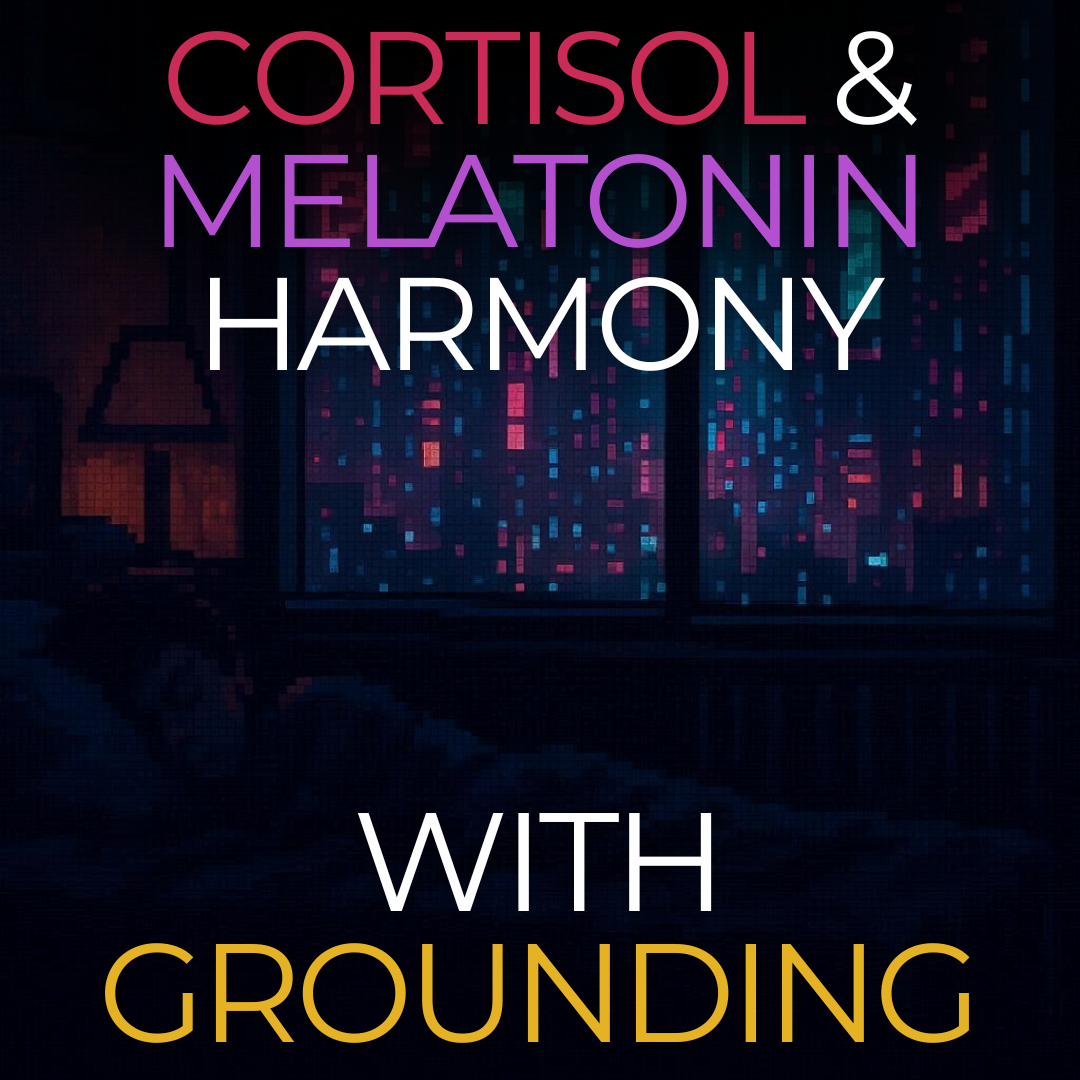
Here, you'll find a vast treasure trove of grounding knowledge, featuring insights from the Earth & Water books, along with physics and mathematical frameworks applied to human biology, and much more.
Rob
The Grounding & Cortisol / Melatonin Connection
Cortisol is a steroid hormone released by the adrenal cortex and controlled by the hypothalamic-pituitary-adrenal axis. Its primary job is simple: mobilize glucose when the organism is under load. CRH → ACTH → cortisol, plus a circadian oscillation driven by the suprachiasmatic nucleus.
Zooming In - Grounding's Effect on Bioenergetics and Mitochondrial Efficiency
I’ll be going over a cool paper for you guys today. In 2025, researchers at UC Davis uncovered a very cool effect on mitochondrial performance that could redefine what it means to be grounded. Although, the results have been hinted at many times in past articles and in the Earth & Water Books. Can’t say I’m surprised!
Disease Common Denominator - Oxidative Stress
Oxidative stress arises when the production of reactive oxygen species exceeds the body’s electron-based defense capacity. These unpaired electrons strip stability from biomolecules, damaging lipids, proteins, and DNA. The result is chronic, low-grade inflammation that underlies metabolic, cardiovascular, and neurodegenerative disease.
Earth Circuit Generator - Lightning
Lightning is the primary mechanism that moves negative charge from the atmosphere back into the Earth. Each strike injects a sharp current pulse into the ground, spreading electrons through soil, rock, water, and built surfaces. That constant charge transfer is what maintains the Earth’s negative surface potential and keeps the global electric circuit running.
Earth-Body Equipotential = Grounding
When conductors at different electric potentials make contact, charge moves until the entire connected system reaches a single potential. The Earth functions as an enormous reference conductor with effectively infinite capacitance, so its potential remains stable as smaller bodies equalize to it.
A Conversation with Ste Lane on Radical Health Radio #142
“This week, Ste sits down with Rob Iron Shell, founder of The Grounded Athlete and Olympus Earthwear, to explore how reconnecting with the earth can restore balance in our modern world of noise and indoor living. From EMFs and stress to masculinity and creativity, their conversation reveals why the simplest medicine might be right beneath your feet. “
The Antioxidant Paradox
Antioxidants neutralize free radicals, but excess supplementation often fails because free radicals also serve vital roles in signaling and adaptation. The balance between oxidative and anti-inflammatory forces is delicate. Antioxidants donate electrons to stabilize radicals, yet this can trigger new reactive species unless regenerated by others like vitamin C restoring vitamin E.
Grounding & The Vagal Response
Vagal tone refers to the functional activity of the vagus nerve, the primary pathway of the parasympathetic nervous system. Originating in the brainstem, the vagus nerve innervates key organs including the heart, lungs, and digestive tract, modulating vital processes such as heart rate, respiration, and gastrointestinal motility.
Normal Is an Illusion: Why We Need Grounding
Modern definitions of “normal” physiology may be flawed because most humans and research subjects exist electrically insulated from the Earth.
The Big 3: Grounding and Human Health
Years of research, writing, and experimentation have convinced me that grounding’s potential can be traced back to three primary mechanisms of action—what I call The Big 3.
Why Entropy Can Be Confusing (There's Multiple Definitions..)
Entropy trips people up because the word itself carries different meanings depending on context, and the semantics matter.
What is Normal? Rethinking Physiology Through Grounding
If grounding is the natural baseline, then research conducted on insulated organisms may be measuring physiology in an altered state. This raises the unsettling possibility that much of our “normal” is, in fact, a distortion.
Grounding & Signal-To-Noise Ratio (SNR) (The Natural Noise Canceller)
Grounding improves SNR in the body by stabilizing its electrical baseline. By draining excess charge and reducing noise, signals like nerve impulses / heart rhythms / brain waves become clearer which supports more efficient energy use and regulation.
Grounding and Signal-to-Noise Ratio (SNR)
In both engineering and biology, signal-to-noise ratio (SNR) measures how clearly a signal can be distinguished from background noise. A higher SNR means information flows with less distortion and less energetic waste.
Entropy & Information Flow (from e-girls to black holes)
Entropy sounds abstract, but it’s actually one of the most unifying ideas in science. It tells us how much uncertainty there is in a system, how many bits it takes to describe it, and why everything from language to heat to black holes follows the same rules.
Inflammatory Barricades & Grounding
The body’s inflammatory barricade is a frontline defense designed to surround and contain threats like pathogens or tissue injury. The process begins with recognition. Immune cells such as neutrophils and macrophages detect harmful invaders or damaged tissue, then rush to the site.
Grounding and the Human Matrix
The matrix refers to a vast, interconnected web composed mainly of proteins and ground substance. It is a physical link that extends from the nucleus of our cells out to the larger structures of the body.
The Lazy Universe (Lagrangian Mechanics in a Nutshell)
Nature is lazy, but not careless. Light takes the fastest path, planets minimize Action, and every falling object is simply solving the problem of “what’s the laziest way to do this?” That’s the heart of Lagrangian mechanics.. the physics of cosmic laziness!
The Matrix - Primer
The Matrix is the body’s ubiquitous biological infrastructure. It exists at both cellular and systemic levels, forming a continuous semiconductive network built from proteins, structured water (including Exclusion Zones and Coherence Domains), and ground substance.




















